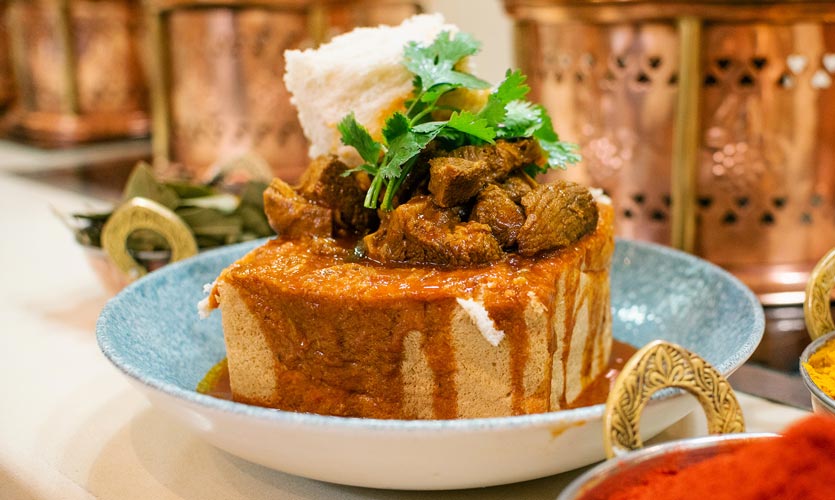On the streets of Durban and for the people of South Africa, Bunny Chow is a staple delicacy. It is a widely popular street food. A loaf of bread, hollow, filled with meat or vegetarian curry in the bowl of bread is a hearty meal which can keep people going for an entire day. It may be difficult to find Bunny Chow in India, but the origins of this meal are entirely Indian. Bunny Chow is a reflection of the Indian diaspora’s vast impact on the culinary culture of South Africa. There are several origin stories of the famous Bunny Chow, but it is undeniably an Indian creation.
One of the stories suggests that it was in the mid 20th century during the apartheid period, a system of racial separation, segregating people of color from the white population in South Africa. The unjust system had its own unlawful rules, one of them being the use of indentured laborers to work in sugarcane fields at KwaZulu Natal. These workers needed to be fed and Bunny Chow became a staple food for them. The dish was made by the bania community- a caste of Indian origins known for their business acumen. The term bunny comes for bania, and chow is slang for food.
Another unlawful practice during apartheid era was that Indians and black South Africans were denied entry into many restaurants and hotels. The Bunny Chow was not only a fulfilling meal but also easy to carry and portable. As people were only allowed to carry food out from back doors in restaurants, Bunny Chow was easily accessible. It was also considered to be a substitute for beans and roti, which would easily break. Instead, the Bunny Chow was sturdy and only needed to be wrapped in paper. The practicality of the meal is what made it widely popular.
This simple but fulfilling delicacy has another origin story. At the Royal Durban Golf Course, Indian caddies had little time to eat and a lot of work to do. The laborers brought Bunny Chow as an easily accessible option. The hollowed out bread became an easy substitute for the lack of take out containers and packaging material.
No matter what the origins of this delicacy are, it is a delicious and wholesome meal. Filled with mutton curry or vegetarian beans, the dish is an Indian African fusion reflecting the culinary delight of the Indian diaspora within the South African community. It is also a reflection of the injustices faced by indentured Indian laborers and how they eased their hardships through food.
Read more: Dragon Fruit Is In The Spotlight: From Being Named ‘Kamalam’ To A Dedicated Festival










